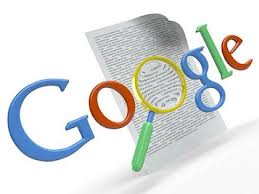If your current Internet speed is very slow and you are living in an area where broadband connections are still not available, here are some ideas to help you download web pages faster on your computer. You may use the same tips to improve your web browsing experience on a sluggish USB modem.
Surf the Web Faster on Slow Internet
1. Turn off web images, the Adobe Flash plug-in, Java Applets and JavaScript from your browser settings as these files are often the bulkiest elements of any web page.
2. Increase the size of your browser cache. If the static parts of a site (like background graphics, CSS, etc) are stored in the local cache, your browser can safely skip downloading these files when you re-visit the site in future thus improving speed.
3. Sometimes the slow DNS server of your ISP can be a bottleneck so switch to OpenDNS as it can resolve website URLs into IP addresses more quickly. If you aren’t too happy about OpenDNS redirecting your Google queries, follow this simple hack.
4. Finch can serve a light-weight version of any website in real-time that is free of all bells and whistles. For instance, the New York Times homepage with all external resources can weigh more than a MB but Finch trims down the size by 90% so the site loads more quickly on a slow web connection.
5. Flinch (mentioned at #4) is good for reading regular websites but if you just need to check the latest articles published on your favorite blogs, use BareSite. This service will automatically detect the associated feed of a website and render content quickly inside a minimalist interface.
6. The Google Transcoder service at google.com/gwt/n can split large web pages into smaller chunks that will download more quickly on your computer (or mobile phone).
7. Monitor your Internet speed to determine hours when you get the maximum download speed from the ISP. Maybe you can then change your surfing schedule a bit and browse more during these "off peak" hours.
8. You can use a text browser like Lynx or Elinks for even faster browsing. It downloads only the HTML version of web pages thus reducing the overall bandwidth required to render websites.
9. When searching for web pages on Google, you can click the "Cache" link to view the text version of a web page stored in the Google Cache. Alternatively, install this GM script as it adds a "cached text only" link near every "Cached" link on Google Search pages.
10. Move your web activities offline as far as possible. You can send & receive emails, write blogs and even read feeds in an offline environment. Also see: Save Web Pages for offline reading.
11. You can interact with websites like Flickr, Google Docs, Slideshare, etc. using simple email messages. Uploading a new document to Google Docs via email would require less bandwidth than doing it in the browser because you are avoiding a trip to the Google Docs website.
12. Applying the same logic, you may also consider using tools like Web In Mail or Email The Web as they help you browse websites via email. Just put the URL of a page (e.g., cnn.com) in the subject field of your email message and these services will send you the actual page in the reply.
13. Bookmarklets are like shortcuts to your favorite web services. You neither have to open the Gmail Inbox for composing a new email message nor do you have to visit Google Translate for translating a paragraph of text. Add relevant bookmarklets to your browser bar and reduce the number of steps required to accomplish a task.
14. Use the netstat command to determine processes, other than web browsers, that may be secretly connecting to Internet in the background. Some of these processes could be consuming precious bandwidth but you can block them using the Firewall.
15. Use URL Snooper to determine non-essential host names that a website is trying to connect while downloading a web page. You may block them in future via the hosts file or use Adblock Plus to filter out advertising banners on web pages.
16. If you don’t want to spoil your web surfing experience by stripping images and other graphic elements from a web page, get Opera Turbo. It will first fetch the requested web page on to its own server and then send it to your machine in a compressed format. Opera Turbo won’t change the layout of a web site but can lower the image resolution so that they load faster on slow Internet.
17. Change the user agent of your desktop browser to that of a mobile phone like Apple’s iPhone or Windows Mobile. This will help you browse certain web sites like Google News, WSJ, etc. much faster because they’ll serve you a light-weight and less cluttered mobile version of their sites thinking you’re on a mobile phone.








